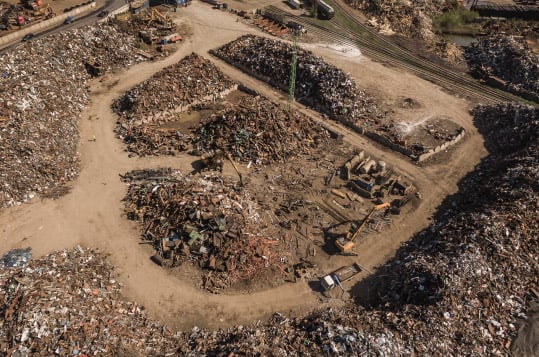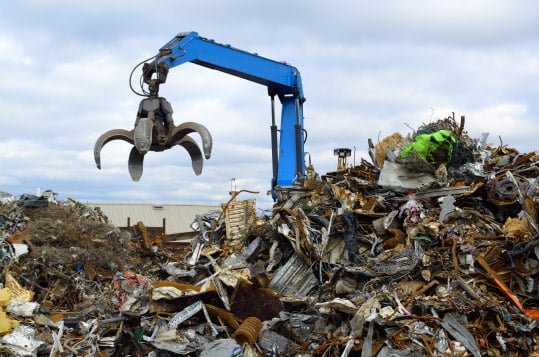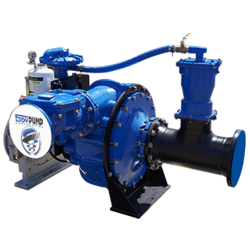Applications of EDDY Pump in Metal Recycling



Applications of Our Slurry Pumps in Metal Recycling

- Shredder Output Handling: Metal recycling often involves shredding processes to break down larger metal objects into smaller pieces. These shredded materials can form a challenging slurry mixture containing metal fragments, fluids, and debris. Slurry pumps effectively transfer this mixture from the shredder to subsequent processing stages.
- Sorting and Separation: The submersible pumps help transport the scrap metals or mixed materials to sorting and separation units, where magnets, screens, and other mechanisms separate ferrous and non-ferrous metals from different materials. The abrasive nature of these mixtures requires robust slurry submersible pumps to withstand wear and tear.
- Material Transport: Slurry pumps move metal-rich slurries between different processing stages, such as conveying materials from sorting stations to furnaces, smelters, or other refining processes.
- Dewatering: In metal recycling, the scrap metals or materials can often be wet or contain liquids that must be removed before further processing. Our submersible pumps can be used for dewatering separating liquids from metal-bearing solids.
- Liquid Recovery: In processes like coolant recovery from machining operations or draining liquids from scrap materials, these submersible pumps efficiently extract and transfer the fluids for reclamation or proper disposal.
- Metal Recovery from Waste Streams: Submersible pumps from EDDY Pump extract valuable metals from waste streams or residual materials. These submersible pumps transfer these mixed slurries to specialized separation equipment that can recover precious metals.
- Settling Ponds and Pits: Metal recycling facilities may have settling ponds or pits where slurry waste is collected. Slurry pumps help manage the movement of these slurries to prevent sediment buildup and ensure efficient recycling processes.
- Scrap Yard Operations: Slurry pumps are utilized in scrap yards to handle the runoff and drainage water that accumulates on the site due to rain or other factors. These submersible pumps prevent flooding and assist in managing environmental concerns.
- Foundry and Smelting Operations: In metal smelting processes, slurry pumps transport materials from storage to the furnace, moving molten metals between different process stages.
- Tailings Management: Some scrap metal or other recycling processes generate tailings or waste by-products that must be managed appropriately. Slurry pumps help transport these tailings to designated storage areas, preventing environmental contamination.
CALL FOR SALES OR SUPPORT
If you need help with Pump Selection, Sales or Engineering Support
Call 619-345-5446

Application of EDDY Pump’s Hydraulic Dredging in Metal Recycling

- Harbor and Waterway Cleanup: Hydraulic dredging removes scrap metals, debris, and waste materials from harbors, ports, and waterways. This process helps maintain navigational channels and prevent environmental contamination.
- Contaminated Sediment Removal: Metal-rich sediments in water bodies that often contain pollutants must be cleaned to ensure ecological health. Dredging extracts these sediments, allowing for proper treatment and recycling of the metal content.
- Reclamation of Metal-Rich Materials: In underwater mining or salvage operations, hydraulic dredge is employed to recover submerged metal-rich materials, such as discarded machinery, vehicles, or metal components, for recycling.
- Slag and Slurry Removal: In metal recycling facilities, dredging removes slag, slurry, and other by-products that settle at the bottom of storage ponds or tanks. These materials often contain valuable metals that can be recycled.
- Dredging for Landfill Reclamation: Hydraulic dredging can aid in the reclamation of metals and valuable materials from landfills, where metals are often disposed of alongside other waste. Dredged materials can be processed for recycling.
- Mining Tailings Rehabilitation: Hydraulic dredging can extract tailings or waste materials containing metals in abandoned or inactive mining sites. These materials can then be processed for metal recovery and environmental restoration.
- Industrial Pond Cleanup: Hydraulic dredging is employed to clean up metal-laden sediments from industrial ponds, ensuring compliance with environmental regulations and preventing the spread of contaminants.
- Metal Recovery from Riverbeds: Dredging is used to extract metals from riverbeds, especially in regions with a mining or industrial activity history. The extracted materials can be processed for metal reclamation.
- Scrap Yard Cleanup: Hydraulic dredging can be utilized in scrap yards to clean out settling ponds or water bodies containing scrap metal debris, improving site cleanliness and facilitating efficient recycling operations.
- Historic Site Restoration: Dredging can aid in restoring historical metal artifacts or materials from underwater sites, preserving historical significance, and potentially recovering valuable metals.
- Shipwreck Salvage: In salvage operations, hydraulic dredging is used to recover metals and materials from sunken vessels, contributing to historical preservation and potential recycling.
- Environmental Remediation: Hydraulic dredging can be part of environmental remediation efforts, extracting metal-contaminated soils or sediments from water bodies, wetlands, or other sensitive areas.




